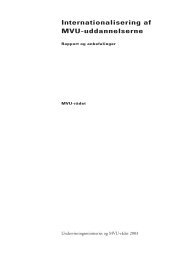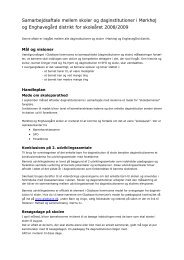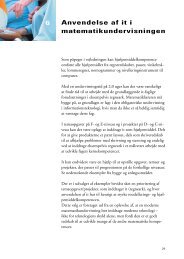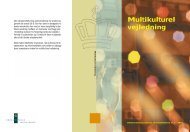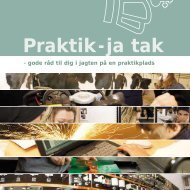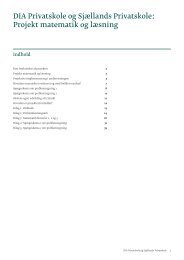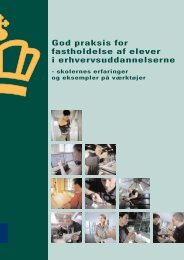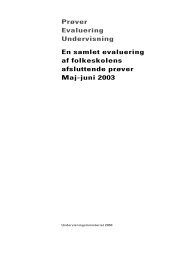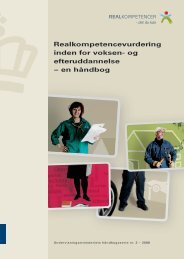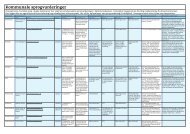The Danish - Undervisningsministeriet
The Danish - Undervisningsministeriet
The Danish - Undervisningsministeriet
Create successful ePaper yourself
Turn your PDF publications into a flip-book with our unique Google optimized e-Paper software.
A flexible system<br />
depending on their qualifications, requirements and needs.<br />
<strong>The</strong> basic courses typically last 20 weeks but may last up to 60<br />
weeks, depending on the proficiency level, requirements and<br />
needs of the individual trainee.<br />
<strong>The</strong> basic course of the commercial training programmes is<br />
not yet as flexible as that of the other VET programmes. <strong>The</strong><br />
trainees normally enter via the school pathway and attend a<br />
basic course lasting 76 weeks. However, the intention is for the<br />
basic course to become more flexible: the introduction of APL,<br />
the “toning” of basic subjects (please see Flexible curriculum,<br />
page 33) and the introduction of specialist subjects earlier in<br />
the basic course have opened up for increased flexibility, which<br />
will constitute a major challenge to the commercial colleges in<br />
the coming years.<br />
Most trainees enter VET via the basic course and then apply<br />
for an apprenticeship once they have completed the course.<br />
Everybody who has completed basic schooling can be admitted<br />
to the basic course; but a contract with an enterprise is required<br />
in order to continue on the main course. <strong>The</strong> selection of<br />
trainees for apprenticeships is carried out on market terms, i.e.<br />
the trainee writes an application and goes to a job interview<br />
in competition with other trainees. <strong>The</strong> trainee and the<br />
enterprise then enter a binding contract (with a three-month<br />
trial period) and the trainee receives wages according to the<br />
collective agreement within the sector. During school periods,<br />
the enterprise receives compensation from the Employers’<br />
Reimbursement Scheme (Arbejdsgivernes Elevrefusion – AER).<br />
This scheme was set up by law in 1977 and is financed by<br />
contributions from all employers.<br />
Provision of a sufficient number of apprenticeships is of<br />
utmost importance to guarantee the trainees within VET<br />
an opportunity for practical in-company training and to<br />
secure sufficient numbers of qualified skilled workers for<br />
companies to employ. <strong>The</strong>refore, it is necessary to develop<br />
apprenticeship contracts so that they reflect developments<br />
30



